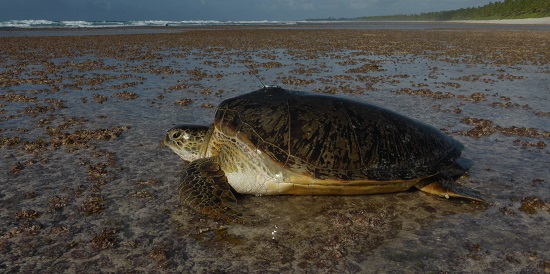Tracking shows value of Marine Protected Areas, says Deakin researcher
Media release
Deakin research included in an international study tracking the world's large shark species has highlighted the importance of the sanctuaries provided by Marine Protected Areas.
Professor Graeme Hays from Deakin's School of Life and Environmental Sciences contributed to the research, published in this week’s issue of Nature.
Professor Hays, a long-term advocate of satellite tracking and its role in endangered species conservation, helped analyse and interpret the data from almost 2000 satellite-tracked sharks.
More than 150 scientists from 26 countries, including Australia, participated in the project, which gave them unprecedented detail of the ocean hot-spots favoured by 23 different shark species, including blue sharks, great whites, shortfin mako and tiger sharks.
Professor Hays said the Nature study showed the intense commercial fishing pressure that sharks face in unregulated open-ocean areas far from land.
"Commercially valuable sharks, such as the North Atlantic blue and shortfin mako which are hunted for their fins and meat, were the most likely to spend time in areas used by commercial fisheries," Professor Hays said.
"Around Australia several shark hotspots were identified including great whites in the Great Australian Bight and whale sharks off the north-west coast of Australia where these species face little risk from commercial fishing."
In ongoing conservation research, Professor Hays is extending the Nature study by tracking sea turtles that may be killed as bycatch in commercial fisheries.
"My research has shown that turtles, just like large sharks, can find safe refuge in Marine Protected Areas," Professor Hays said.
"For example, in the Indian Ocean, green turtles can swim over 10,000 km to breed in a massive 640,000 km sq marine sanctuary around the Chagos Archipelago, where there is full protection for all marine species.
"These tracking results show the massive distances that marine animals can travel across the world’s oceans and how multiple species make use of protected areas.
"The results highlight the potential of using satellite surveillance to track large marine species and show where they spend most of their time.
"Building on these recent findings, efforts are now underway, led by the United Nations and others, to introduce regulations for commercial fishing in open ocean areas beyond national jurisdiction," Professor Hays said.

